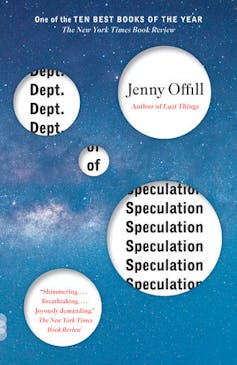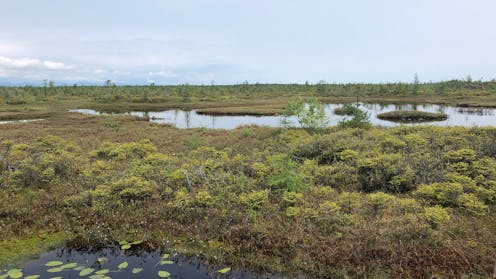Source: The Conversation – Canada – By Valere Gaspard, Research Fellow, Leadership and Democracy Lab, Western University
There is a heightened concern about the current state of democracy around the globe. These include worries about a decrease in freedom, the growing number of autocracies around the world and citizens’ dissatisfaction with democracy or government.
A 2022 survey of Canadians found that one-third have little to no trust in democracy and close to half don’t feel represented by government. These concerns aren’t unique to Canada.
A lot of public opinion research on views about democracy focuses on citizens. Surely this is understandable, since they are the ones choosing who is in power in a democratic state.
But what do the people in power or those running for office think about democracy? Surprisingly, for all the attention we place on politicians, we don’t know much about how they regard the democratic systems they operate in.
Why it matters
Why should we care about what politicians think about democracy? Because politicians can influence the views of citizens, and if they’re elected, they can affect or change democratic processes from within major institutions like legislatures.
Therefore, to understand the contemporary health of democracies across the globe, we need to factor in politicians’ satisfaction with the way democracy works.
While there are growing concerns about the current state of democracy around the globe, new open-access research I’ve conducted has hopeful findings, at least from the perspective of politicians. The analysis covers 49 elections in 21 countries — including Canada — from 2005 to 2021.
The results show that politicians’ democratic satisfaction in a country will be higher when:
- Elections in their country have high electoral integrity; in other words, when elections are free and fair
- Electoral management bodies have sufficient resources to administer elections.
This is good news from the perspective of maintaining a healthy democracy, since the people seeking the power of elected office are more satisfied when their democratic system is working well.
But these findings become convoluted once we consider some attributes of politicians. Specifically, politicians’ democratic satisfaction begins to vary once we consider:
- Whether their political party formed the government (winner) or is not part of government (loser)
- Whether they identify with the ideological left or right.
Winning and losing
Nobody likes to lose, so it’s natural that a winner will be more satisfied with democracy.
Although, the view that may be surprising — or troubling — is the extent to which politicians who won tolerate low electoral integrity, at least in terms of their democratic satisfaction.
As illustrated above, when electoral integrity is low in a country, politicians who lose will be much less satisfied with democracy than winners. When electoral integrity is high, there is no noticeable difference between politicians that won or lost.
The difference between winners’ and losers’ democratic satisfaction is problematic, but what is most troubling is that winners’ satisfaction with democracy does not significantly change across different levels of electoral integrity.
When it comes to citizens, previous research has shown that when electoral integrity is low, democratic satisfaction among citizens will also be low, regardless of whether their preferred politician or political party won or lost.
Politicians therefore differ from their citizen counterpart — those who won are much more tolerant of lower electoral integrity (at least in terms of their democratic satisfaction).
In a stable democracy with free and fair elections, this might not matter much. However, if a country begins to experience democratic decline, then these attitudes could become detrimental.
If politicians who win are not concerned with low electoral integrity, then they might lack the incentive needed to make necessary changes to electoral processes. Those concerned about electoral processes in these kinds of circumstances may therefore need to find alternative routes or incentives to encourage change.
Left-to-right political ideology
While the contrast between winners and losers may be discouraging, there are more similarities between those on the ideological left and right. Electoral management bodies having sufficient resources to administer elections matters to both leftist and rightist politicians in terms of their democratic satisfaction.
However, as shown above, having sufficient resources to administer elections matters more to politicians on the ideological right. This may surprise some readers given past claims that right-leaning groups or people might advocate for more restrictive voting processes and laws.
For those concerned with democratic stability, it’s promising to note that politicians across the ideological spectrum will generally be more satisfied with democracy when there are more resources to administer elections.
Overall, politicians on average tend to be more satisfied with democracy when it is working well — specifically, when elections are free and fair, and when electoral management bodies have the capacity to administer well-run elections. This is good news given concerns surrounding the current global state of democracy.
However, policymakers and practitioners in Canada and abroad focusing on democratic stability and elections should take note of these findings. The attitudes of politicians in democratic countries may not be concerning when everything is working as intended, but if democratic processes begin to weaken or fail, the indifference of winners towards electoral integrity could be troublesome.
At this moment of heightened concern about the current state of democracy around the globe, researchers and practitioners alike need to better understand the attitudes and motivations of the people who lead our systems of government.
![]()
Valere Gaspard is a PhD candidate at the University of Ottawa and a Research Fellow at Western University and Trent University’s Leadership and Democracy Lab. His research is supported in part by funding from the Social Sciences and Humanities Research Council (CGS Doctoral award). His views do not reflect those of any employer(s).
– ref. How do politicians view democracy? It depends on whether they win or lose – https://theconversation.com/how-do-politicians-view-democracy-it-depends-on-whether-they-win-or-lose-261647








